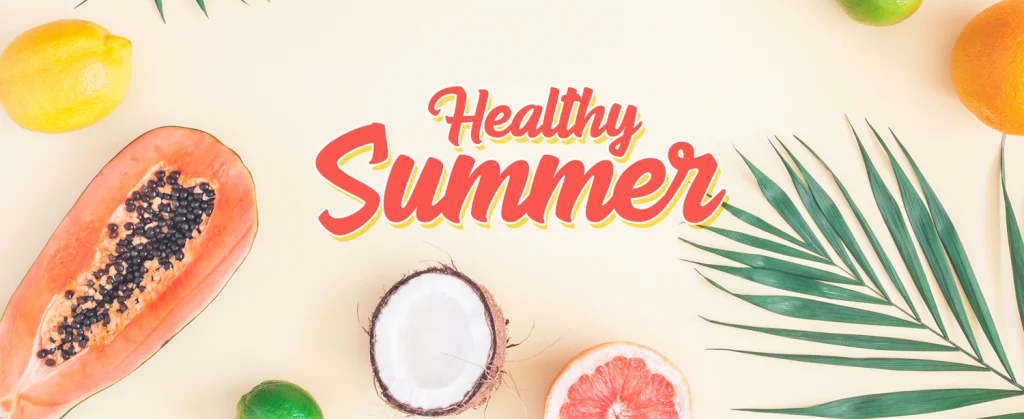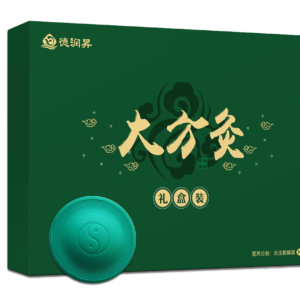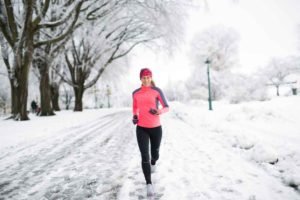Treating Winter Diseases in the Summer with Chinese Medicine 冬病夏治,巧用中医药
The hottest days of a year is coming. The three dog-days ( three-fu days) of this year will be falling as following time:
- First Fu: July 10th – July 19th (10 days)
- Meddle Fu: July 20th – August 8 (20 days)
- Last Fu: August 9th – August 18th (10 days)
“Fu” means latent or lurking. The “fu” of “dog days” means “lurking evil”, which is the “heat evil” in the so-called “six evils” (wind, cold, heat, dampness, dryness and fire). This will also be the best time for wellness practitioners to treat winter diseases in the summer.

Treating winter diseases in the summer is a unique therapy in Chinese medicine. It is based on the principle of “nourishing yang in spring and summer” from the Huangdi Neijing Suwen and the concept of “summer overcoming winter” from the Huangdi Neijing Lingshu. Treating winter diseases in the summer involves providing targeted treatment in the summer for certain diseases that are prone to occurring or worsening in the winter. This helps enhance the body’s resistance to diseases, so that the symptoms that are prone to appearing or worsening in the winter can be alleviated or eliminated. This approach embodies the holistic view of “harmony between man and nature” and the disease prevention concept of “treating before the onset of disease” in traditional Chinese medicine (TCM).
The common treatment methods include herbal plaster application on acupoints, acupuncture, and oral herbal medicines. By applying these methods during the summer when yang qi is at its strongest in nature, the goal is to tonify and warm the yang, dispel cold, and unblock the meridians, thereby preventing and treating diseases that are prone to occurring in the winter.

Mechanism of Action
Winter is yin, and summer is yang. “Winter diseases” refer to certain deficiency-cold disorders that are prone to occurring or worsening in the winter. Due to the body’s inherent yang deficiency, coupled with the predominance of yin and waning of yang in the external environment during winter, the healthy qi cannot expel the pathogenic factors, leading to the recurrence or worsening of certain chronic diseases like chronic cough, asthma, chronic diarrhea, joint cold pain, aversion to cold, and susceptibility to illness. “Summer treatment” refers to the therapeutic measures taken during the summer solstice period when the yang qi in nature and the body is at its strongest. These measures, such as tonifying the yang, dispersing cold, and promoting blood circulation, can on one hand strengthen the body’s resistance to pathogenic factors, and on the other hand help eliminate the cold-damp pathogenic factors, thereby achieving the goal of treating or preventing the aforementioned diseases that are prone to occurring or worsening in the winter.
The most commonly used treatment method in treating winter diseases in the summer is the application of herbal plasters on acupoints. Modern research has found that the drugs can penetrate through the intercellular spaces of the epidermis and be absorbed through the skin itself, allowing them to enter the body’s blood circulation and produce significant pharmacological effects.

Treatment Principles and Methods
The characteristic of deficiency-cold disorders is that they tend to exacerbate or occur in the winter, while they improve or disappear in the summer. If treatment or preventive measures are provided in the summer when these types of disorders are relatively in remission, it can help reduce or alleviate the symptoms in the winter. This embodies the TCM principle of “treating the manifestation when it appears, and treating the root cause before it appears.”
During the summer, when deficiency-cold disorders are relatively stable, the treatment approach should be to “supplement” for the deficiency and “warm” for the cold. For example, taking warming and tonifying herbs to support the healthy qi and expel the cold pathogenic factors; using external methods like herbal plaster application or acupoint injection to warm the meridians, dispel cold, and eliminate pathogenic factors. These can achieve the goal of supporting the healthy qi and eliminating pathogenic factors, promoting the improvement of the disorder.
The Four “Secret Weapons” of Treating Winter Diseases in the Summer

1. Herbal Plaster Application on Acupoints: This therapy involves applying herbal formulations on specific acupoints along the meridians during the “three hottest days” of summer, based on TCM differential diagnosis. The drugs penetrate from the surface to the interior, reaching the meridians and viscera to achieve the therapeutic purpose. This “heaven-moxibustion” (bao-moxibustion) utilizes warming and penetrating Chinese herbs, and has become widely used due to its evident efficacy, simple operation, low cost, and lack of significant side effects.

2. Moxibustion: Generally using mugwort leaves, made into moxa floss, cones or sticks, the moxa is placed on or near acupoints or painful areas and burned. The warm and gentle heat of the moxa, along with the medicinal effects, is transmitted through the meridians to warm the channels, harmonize yin and yang, tonify the healthy qi, and eliminate pathogenic factors.

3. Gua Sha (Scraping): Using a gua sha tool, lightly scraping the skin surface in one direction with a small amount of gua sha oil. Gua sha can stimulate the meridians and acupoints, causing the local skin to redden and show tiny red or purple spots (known as “sha”). This improves local microcirculation, helps unblock the meridians, relieve muscle tension, and dispel wind-cold, invigorating the body’s nervous, circulatory, immune, and excretory systems to accelerate metabolism.

4. Cupping: Cupping is another commonly used TCM therapy for treating winter diseases in the summer. The principle and mechanism of action are similar to gua sha, involving stimulating the meridians and acupoints to induce local redness and congestion, thereby promoting qi and blood circulation and eliminating cold-damp. However, cupping requires selecting fleshy areas to apply the cups, and the duration of application is relatively shorter.
Three-fu moxibustion is the use of moxibustion at certain specific acupoints to achieve the purpose of treating diseases. Moxibustion has the functions of warming the meridians and clearing collatals, activating blood circulation and removing blood stasis. It can promote the blood circulation, enhance the metabolic function of the human body, regulate the endocrine, digestion and absorption of the body, so as to achieve the purpose of treating diseases. The commonly selected acupoints for three-fu moxibustion are Zhong-wan (CV-12), Guan-yuan (CV-4), Shen-que(CV-8), Zusanli (ST-36), Shen-zhu(GV-12), Ming-men(GV-4), Da-zhui(GV-14), Shen-shu(BL-23) and Baliao(BL-31 to BL-34 ), etc. Ginger moxibustion can also be used, and the effect of ginger moxibustion is better than simple moxibustion. The dog days of summer are the strongest season of Yang in a year. Moxibustion can achieve twice the result with half the effort at this time.
Suitable Applications and Conditions:
1. Respiratory Diseases: Suitable for treating in the summer include chronic bronchitis, bronchial asthma, COPD, chronic pharyngitis, recurrent respiratory infections, emphysema, and pulmonary tuberculosis. Herbal plasters containing ingredients like white mustard seed, cinnamon, asarum, and ginger juice can be applied.

2. Rheumatic and Autoimmune Diseases: Suitable conditions include rheumatoid arthritis, joint pain and limb numbness, periarthritis of the shoulder, and ankylosing spondylitis. These “impediment” (bi) diseases often worsen in the winter upon cold exposure, but can see significant improvement with summer treatment.
3. Digestive Disorders: Chronic gastritis, functional dyspepsia, peptic ulcers, and chronic colitis. Modern lifestyles often involve consuming cold beverages and spending time in air-conditioned spaces during the summer, which can easily damage the spleen and stomach. Acupuncture, moxibustion, and herbal plasters can help invigorate the healthy qi, relieve pain, and reduce winter exacerbations.
4. Allergic Diseases: Suitable conditions include allergic rhinitis, chronic sinusitis, chronic laryngitis, allergic skin diseases, and allergic colitis. The allergic constitution is often associated with the cold nature in TCM, so the treatment principle is to “warm the cold.” During the summer remission period, applying warm, tonifying herbal plasters on relevant acupoints can help stimulate the meridians, improve constitution, and enhance immunity.
5. Musculoskeletal Disorders: Suitable conditions include chronic neck/low back pain, periarthritis of the shoulder, and cervical spondylosis. These are often caused by incorrect posture, so warming and yang-tonifying herbal plasters can be applied on acupoints like Dazhui, Mingmen, Shenshu, and Yanglingquan to warm the meridians and dispel cold.
6. Chronic Skin Diseases: Suitable conditions include urticaria, chilblains, scleroderma, chronic eczema, atopic dermatitis, and psoriasis. During the summer when yang qi is flourishing, protecting the yang, clearing heat and dampness, and promoting blood circulation can be beneficial. This can also have certain beautifying and anti-pigmentation effects.
7. Gynecological Diseases: Suitable conditions include endometriosis, dysmenorrhea, pelvic inflammatory disease, diarrhea during menstruation, and infertility. TCM regards these as being caused by cold-deficiency factors, so summer treatment can be quite effective in eliminating yin-cold, promoting qi and blood circulation in the pelvis, and treating many chronic gynecological disorders. Bao-moxibustion plaster application is a primary treatment method.
8. Sub-health Conditions, Especially Yang Deficiency Constitutions: TCM believes health includes the internal yin-yang balance as well as the balance between the body and the external environment. Sub-health refers to a state where the yin-yang balance is disrupted but no substantial disease has yet developed. This is a relatively easier stage.

Commonly-used Acupoints for Summer Treatment
No matter what you choose to use, moxibustion, cupping or plasters, the commonly selected acupoints may include the following

- Zhong-wan (CV-12),
- Guan-yuan (CV-4),
- Shen-que(CV-8),
- Zusanli (ST-36),
- Shen-zhu(GV-12),
- Ming-men(GV-4),
- Da-zhui(GV-14),
- Shen-shu(BL-23)
- Baliao (8 healing points from BL-31 to BL-34 ),
Ginger moxibustion can also be used, and the effect of ginger moxibustion is better than simple moxibustion. The dog days of summer are the strongest season of Yang in a year. Moxibustion can achieve twice the result with half the effort at this time.
Contraindications
Contraindications in use of herbal plaster of acupuncture points
1. Patients with severe heart, liver, kidney, and brain diseases, malignant tumors, severe diabetes, severe allergies, blisters, boils, or broken skin.
2. Patients who are in the stage of disease flare-up (such as fever, coughing and wheezing, etc.).
3. Pregnant women.
4. People who have a strong system and are easy to get angry.

Precautions and Recommendations:
- If skin irritation such as itching, redness or heat occurs after applying the herbal plaster, do not scratch to prevent infection. If blisters develop, apply burn ointment or medicated liquid. Avoid cold water bathing and sun exposure within 24 hours of the application.
- Be cautious of excessive consumption of cold, cool, greasy and sweet foods. This can easily damage the yang qi, leading to spleen-stomach deficiency and impaired digestion, which will affect the treatment effectiveness.
- Treating winter diseases in summer with Chinese medicine is a specialized approach. It is recommended to undergo this treatment under the guidance of a qualified TCM doctor, based on individual constitution and disease presentation.
For more information about wellness practice in the summer and in different seasons, and about what is appropriate mind-body exercises for different persons, please come to our online “weekly qigong for health” class on every Sunday morning with the link here (the first class is a free trial):
https://us02web.zoom.us/meeting/register/tJ0ucuysrzgoHNS6oLKIzrartSZJMQE97b19




